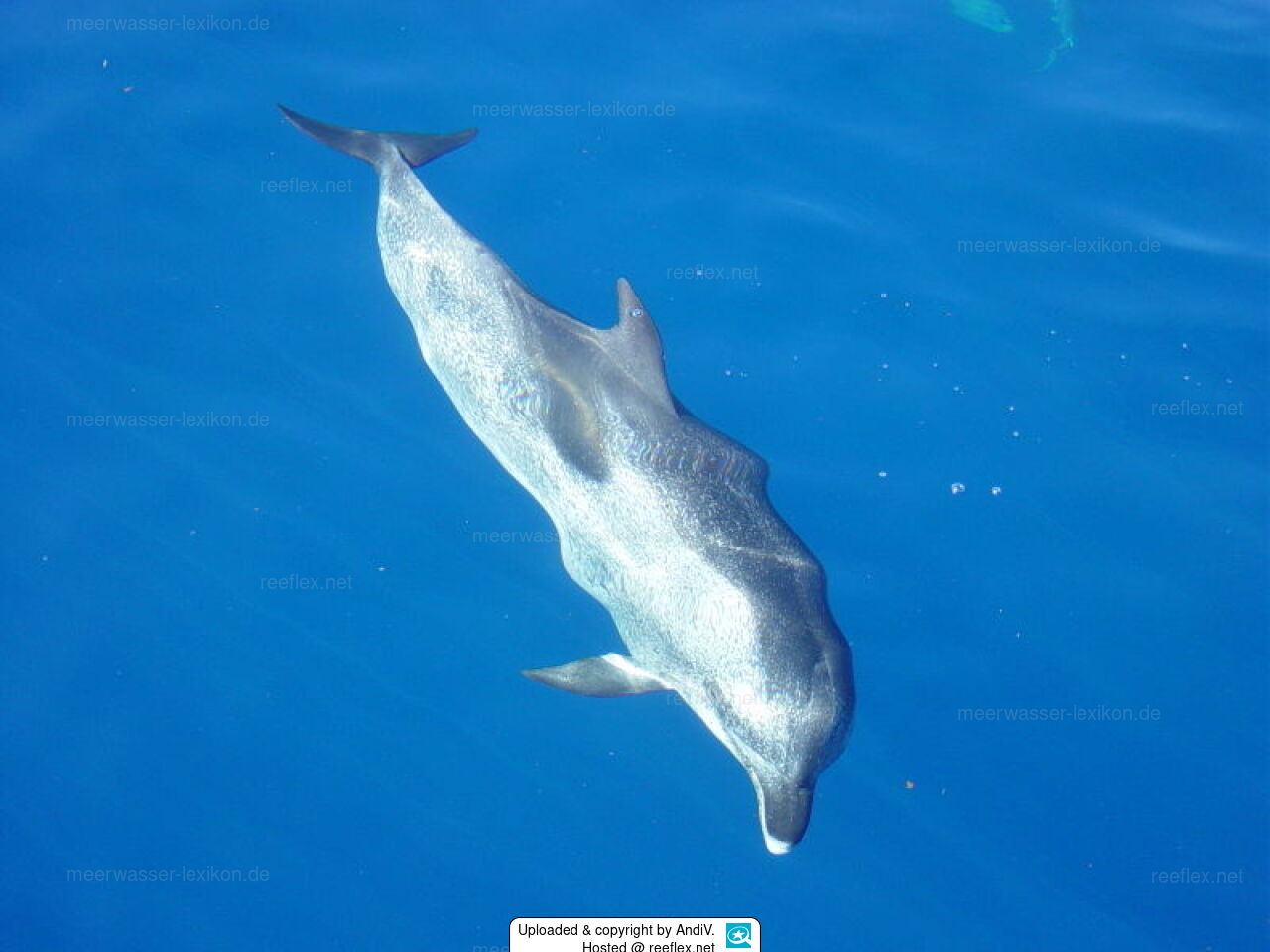Info
Die Flecken von adulten Stenella frontalis sind sehr deutlich abgegrenzt.
Die Flecken können so zahlreich und groß sein, dass sie die eigentliche Grundfarbe des Tieres überdecken.
Dieses Fleckenmuster bleibt ihr Leben lang unverändert.
Jungtiere hingegen haben keinerlei Fleckenmuster, aber mit deutlichen, dunkelgrauen Rückenmuster, hellgrauen Seiten und hellem Bauch.
Nach ca. 1 Jahr sind erste grauweiße Flecken auf den Jungtieren zu erkennen.
Ab zirka dem 2. Lebensjahr ist der Körper überwiegend mit Flecken bedeckt.
Die Färbung und das Fleckenmuster kann sich bei einzelnen Populationen (Hochsee oder küstennah) gravierend unterscheiden.
Sie sind sowohl küstennah, als auch im offenem Meer in den tropischen und warm-gemäßigten Bereichen des Atlantiks anzutreffen.
In Küstennähe trifft man sie meist in Gruppen bis zu 15 Tieren an.
Im offenen Meer kann diese Gruppe oft um die 50 Tiere erreichen.
In seltenen Fällen auch mehrere Hundert Tiere.
Auch tauchen küstennahe Populationen weit aus kürzer, als die Populationen im offenem Meer. Wobei die maximale Tauchtiefe bei etwa 200 m liegt.
Sie ernähren sich dabei von kleinen Schwarmfischen und Kalmaren.
Da die Population an den küstennahen Gewässern größere Zähne besitzt, wird hier auch Jagd auf boden- und riffbewohnende Fische sowie Krebstiere und andere wirbellose Tiere im Sand gemacht.
Kann leicht mit dem Stenella attenuata verwechselt werden, welcher aber eine schmale lange Schnauze mit weißen „Lippen“ hat.
Klasse: Mammalia
Familie: Delphinidae
Gattung: Stenella
Spezies: Stenella frontalis
Die Flecken können so zahlreich und groß sein, dass sie die eigentliche Grundfarbe des Tieres überdecken.
Dieses Fleckenmuster bleibt ihr Leben lang unverändert.
Jungtiere hingegen haben keinerlei Fleckenmuster, aber mit deutlichen, dunkelgrauen Rückenmuster, hellgrauen Seiten und hellem Bauch.
Nach ca. 1 Jahr sind erste grauweiße Flecken auf den Jungtieren zu erkennen.
Ab zirka dem 2. Lebensjahr ist der Körper überwiegend mit Flecken bedeckt.
Die Färbung und das Fleckenmuster kann sich bei einzelnen Populationen (Hochsee oder küstennah) gravierend unterscheiden.
Sie sind sowohl küstennah, als auch im offenem Meer in den tropischen und warm-gemäßigten Bereichen des Atlantiks anzutreffen.
In Küstennähe trifft man sie meist in Gruppen bis zu 15 Tieren an.
Im offenen Meer kann diese Gruppe oft um die 50 Tiere erreichen.
In seltenen Fällen auch mehrere Hundert Tiere.
Auch tauchen küstennahe Populationen weit aus kürzer, als die Populationen im offenem Meer. Wobei die maximale Tauchtiefe bei etwa 200 m liegt.
Sie ernähren sich dabei von kleinen Schwarmfischen und Kalmaren.
Da die Population an den küstennahen Gewässern größere Zähne besitzt, wird hier auch Jagd auf boden- und riffbewohnende Fische sowie Krebstiere und andere wirbellose Tiere im Sand gemacht.
Kann leicht mit dem Stenella attenuata verwechselt werden, welcher aber eine schmale lange Schnauze mit weißen „Lippen“ hat.
Klasse: Mammalia
Familie: Delphinidae
Gattung: Stenella
Spezies: Stenella frontalis







 AndiV
AndiV


